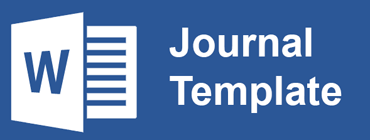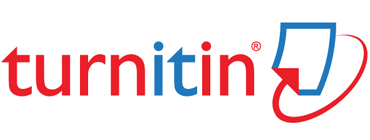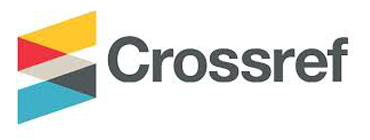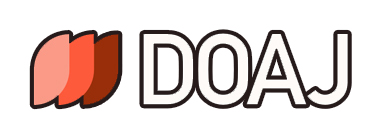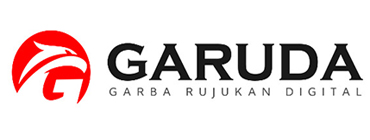PENGEMBANGAN STRATEGI PAROCS UNTUK MENGUBAH KONSEPSI ALTERNATIF SISWA PADA KONSEP KELEMBAMAN
Abstract
Full Text:
PDFReferences
Ayvaci, H. Ş. (2013). Investigating the effectiveness of predict-observe- explain strategy on teaching photo electricity topic. Journal of Baltic Science Education, 12(5). https://doi.org/10.33225/jbse/13.12.548
Baydere, F. K. (2021). Effects of a context-based approach with prediction-observation-explanation on conceptual understanding of the states of matter, heat and temperature. Chemistry Education Research and Practice, 22(3), 640–652. https://doi.org/10.1039/d0rp00348d
Berek, F. X., Sutopo, S., & Munzil, M. (2016). Concept enhancement of junior high school students in hydrostatic pressure and archimedes law by predict-observe-explain strategy. Jurnal Pendidikan IPA Indonesia, 5(2), 230–238. https://doi.org/10.15294/jpii.v5i2.6038
Braasch, J. L. G., Goldman, S. R., & Wiley, J. (2013). Influences of text and reader characteristics on learning from refutations in science texts. Journal of Educational Psychology, 105(3), 561–578. https://doi.org/10.1037/a0032627
Çil, E., & Çepni, S. (2015). The effectiveness of conceptual change texts and concept clipboards in learning the nature of science. 5143(December). https://doi.org/10.1080/02635143.2015.1066323
Fratiwi, N. J., Samsudin, A., Ramalis, T. R., & Costu, B. (2020). Changing students’ conceptions of Newton’s second law through express-refute-investigate-clarify (ERIC) text. Universal Journal of Educational Research, 8(6), 2701–2709. https://doi.org/10.13189/ujer.2020.080655
Gómez, P. J. S. (2021). On the Epistemic Value of Students’ Conceptions in Science Education. Science and Education, 30(4), 827–847. https://doi.org/10.1007/s11191-021-00211-4
Gurel, D. K., Eryilmaz, A., & McDermott, L. C. (2015). A review and comparison of diagnostic instruments to identify students’ misconceptions in science. Eurasia Journal of Mathematics, Science and Technology Education, 11(5), 989–1008. https://doi.org/10.12973/eurasia.2015.1369a
Halim, L., Yong, T. K., & Meerah, T. S. M. (2014). Overcoming Students’ Misconceptions on Forces in Equilibrium: An Action Research Study. Creative Education, 05(11). https://doi.org/10.4236/ce.2014.511117
Harrell, P. E., Kirby, B., Subramaniam, K., & Long, C. (2022). Are Elementary Preservice Teachers Floating or Sinking in Their Understanding of Buoyancy? International Journal of Science and Mathematics Education, 20(2). https://doi.org/10.1007/s10763-021-10160-7
Irmak, M., Inaltun, H., Ercan-Dursun, J., Yaniş-Kelleci, H., & Yürük, N. (2022). Development and Application of a Three-Tier Diagnostic Test to Assess Pre-service Science Teachers’ Understanding on Work-Power and Energy Concepts. International Journal of Science and Mathematics Education. https://doi.org/10.1007/s10763-021-10242-6
Jasdilla, L., Fitria, Y., & Sopandi, W. (2019). Predict Observe Explain (POE) strategy toward mental model of primary students. Journal of Physics: Conference Series. https://doi.org/10.1088/1742-6596/1157/2/022043
Jiang, T., Wang, S., Wang, J., & Ma, Y. (2018). Effect of different instructional methods on students’ conceptual change regarding electrical resistance as viewed from a synthesized theoretical framework. Eurasia Journal of Mathematics, Science and Technology Education, 14(7), 2771–2786. https://doi.org/10.29333/ejmste/90592
Kaya, Z., Kaya, O. N., Aydemir, S., & Ebenezer, J. (2022). Knowledge of Student Learning Difficulties as a Plausible Conceptual Change Pathway Between Content Knowledge and Pedagogical Content Knowledge. Research in Science Education, 52(2). https://doi.org/10.1007/s11165-020-09971-5
Küchemann, S., Klein, P., Fouckhardt, H., Gröber, S., & Kuhn, J. (2020). Students’ understanding of non-inertial frames of reference. Physical Review Physics Education Research, 16(1). https://doi.org/10.1103/PhysRevPhysEducRes.16.010112
Liu, G., & Fang, N. (2016). Student misconceptions about force and acceleration in physics and engineering mechanics education. International Journal of Engineering Education, 32(1), 19–29.
Majid, A., & Suyono, S. (2018). Misconception Analysis Based On Students Mental Model In Atom Structure Materials. https://doi.org/10.2991/snk-18.2018.53
Mason, L. (2018). The Role of Inhibition in Conceptual Learning from Refutational and Standard Expository Texts. International Journal of Science and Mathematics Education, 17(3), 483–501. https://doi.org/https://doi.org/10.1007/s10763-017-9874-7
Ozkan, G., & Selcuk, G. S. (2015). Effect of Technology Enhanced Conceptual Change Texts on Students’ Understanding of Buoyant Force. Universal Journal of Educational Research, 3(12), 981–988. https://doi.org/10.13189/ujer.2015.031205
Ozkan, G., & Selcuk, G. S. (2016). Facilitating conceptual change in students’ understanding of concepts related to pressure. European Journal of Physics, 37(5). https://doi.org/10.1088/0143-0807/37/5/055702
Podschuweit, S., & Bernholt, S. (2018). Composition-Effects of Context-based Learning Opportunities on Students’ Understanding of Energy. Research in Science Education, 48(4). https://doi.org/10.1007/s11165-016-9585-z
Samsudin, A., Azura, Kaniawati, I., Suhandi, A., Fratiwi, N. J., Supriyatman, Wibowo, F. C., Malik, A., & Costu, B. (2019). Unveiling students’ misconceptions through computer simulation-based PDEODE learning strategy on dynamic electricity. Journal of Physics: Conference Series, 1280(5), 1–8. https://doi.org/10.1088/1742-6596/1280/5/052050
Samsudin, Achmad, Suhandi, A., Rusdiana, D., Kaniawati, I., & Costu, B. (2015). Fields Conceptual Change Inventory: a Diagnostic Test Instrument on the Electric Field and Magnetic Field To Diagnose Students’ Conceptions. International Journal of Industrial Electronics and Electrical Engineering, 3(12), 74–77.
Samsudin, Achmad, Suhandi, A., Rusdiana, D., Kaniawati, I., & Coştu, B. (2017). Promoting conceptual understanding on magnetic field concept through interactive conceptual instruction (ICI) with PDEODE∗E tasks. Advanced Science Letters, 23(2), 1205–1209. https://doi.org/10.1166/asl.2017.7539
Suhandi, A., Hermita, N., Samsudin, A., Maftuh, B., & Coştu, B. (2017). Effectiveness of visual multimedia supported conceptual change texts on overcoming students’ misconception about boiling concept. Turkish Online Journal of Educational Technology, 1012–1022.
Will, K. K., Masad, A., Vlach, H. A., & Kendeou, P. (2019). The effects of refutation texts on generating explanations. Learning and Individual Differences, 69, 108–115. https://doi.org/10.1016/j.lindif.2018.12.002
Yürük, N., & Eroğlu, P. (2016). The effect of conceptual change texts enriched with metaconceptual processes on pre-service science teachers’ conceptual understanding of heat and temperature. Journal of Baltic Science Education, 15(6), 693–705.
DOI: http://dx.doi.org/10.30829/tar.v29i2.1758
Refbacks
- There are currently no refbacks.

Jurnal Tarbiyah by UIN Sumatera Utara Medan is licensed under a Creative Commons Attribution-NonCommercial-ShareAlike 4.0 International License.
Based on a work at http://jurnaltarbiyah.uinsu.ac.id/index.php/tarbiyah.
Permissions beyond the scope of this license may be available at http://jurnaltarbiyah.uinsu.ac.id/index.php/tarbiyah/about/submissions#copyrightNotice.


